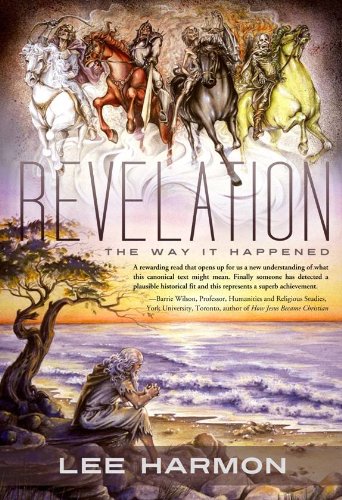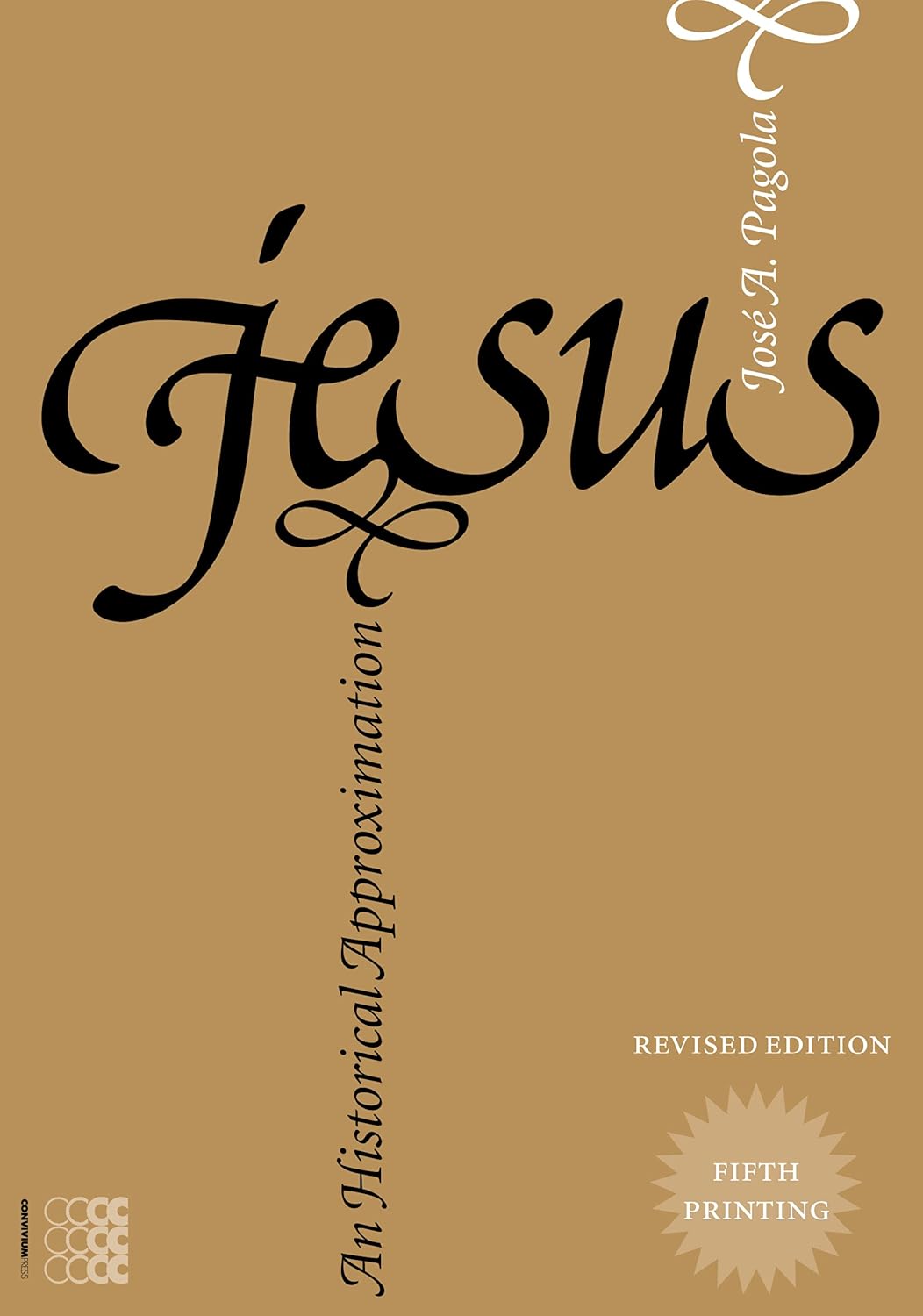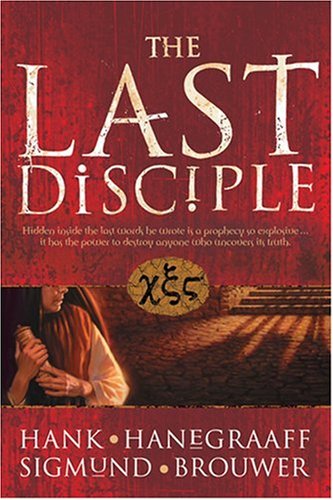John 12:1, 12:12, Inspecting the Passover Lamb
Six days before the Passover, Jesus came to Bethany, where Lazarus lived, whom Jesus had raised from the dead. … The next day the great crowd that had come for the Festival heard that Jesus was on his way to Jerusalem.
//Thus Jesus arrives in Jerusalem precisely five days before the Jewish Passover. In Jewish tradition, the Passover celebrates the day all of Egypt’s firstborn were slain, while the Israelites were “passed over” by the killing angel. Every Israelite selected a lamb without spot or blemish, observed the lamb for five days to verify its perfection, then slit its throat and caught the blood in a basin. This blood was sprinkled on the entrance to their home, on both sides of the doorpost and above the doorpost, so that the killing angel would know to “pass over” the house.
Jesus’ arrival in Jerusalem five days early is not a coincidence. All four Gospels insist the crucifixion occurs on or around the Passover, yet it might surprise you to learn that John is the only Gospel where Jesus is likened to the Passover lamb. In John, Jesus does not eat the Passover lamb with his disciples as he does in other Gospels, because in John, Jesus IS the lamb! (see John 18:28) Jesus arrives in Jerusalem as the lambs are arriving for inspection, he dies at the same moment the lambs die. If you’re the visual sort, you may even imagine him stretched upon a cross in the same manner as the lambs are stretched upon the spit.
For my flesh is real food and my blood is real drink. Whoever eats my flesh and drinks my blood remains in me, and I in them.
Got an opinion? 0 commentsBook review: Revelation: The Way it Happened
by Lee Harmon
★★★★
I’m travelling today, on my way back from my son’s wedding in Texas! May life be good to you and your wonderful wife, Ken! Mary Catherine is a treasure.
Seems like a good time to take a break from writing, and reprint a review of my own book. This review was posted on Amazon by reviewer Lee Halstead, and I appreciated it because it appealed to me as an honest appraisal by the type of Christian I hoped to reach with my book. I’m gratified to be able to present a side of Revelation that many people may not have considered. Here is a link to Lee’s reviews.
Every Christian should read this book
As a new Christian 30 years ago, I was taught the evangelical Christian theological concept of “dispensationalism” and heard the usual interpretations of The Revelation and “end times” regarding the rapture, the tribulation and the second coming of Christ. I read Hal Lindsey’s The Late Great Planet Earth and was satisfied with his explanation as it never occurred to me that his explanation (or any others) was merely his interpretation and that he could be wrong. As I grew in age and as a Christian, after reading The Revelation several times, many things began to bother me about what I had been taught and learned about it and I began to question popular “end time” teachings. I have hoped and prayed for an explanation that made sense and was excited to find this book. Author Lee Harmon has written it from the point of view of a Jewish Christian named Samuel and his teenage son Matthew, who live during the time of and have received a copy of The Revelation from John, its author. Samuel and Matthew discuss The Revelation verse by verse with much Jewish and Roman history, culture and events woven in. A fascinating and thoughtful read, it presents a possible and common sense explanation of The Revelation. I also have read Steve Wohlberg’s “End Time Delusions”, and highly recommend it, more for it’s history of dispensationalism than anything, as I do not agree with a lot of Wohlberg’s explanations for The Revelation. But his thorough and exacting history of dispensationalism and how it came to be incorporated into modern Christian beliefs should not be missed by any Christian. I am still digesting the content of these books and coupled with the knowledge we simply cannot know the future, I have just decided not to take a firm position as to being a “futurist, historicist or preterist.” Instead, I am choosing to focus instead on living as a disciple of Christ in the present, as Christ said to.
(reprinted with permission)
More about this book can be found at http://www.thewayithappened.com

Matthew 5:44, Love Your Enemies
“You have heard that it was said, ‘Love your neighbor and hate your enemy.’ But I tell you: Love your enemies and pray for those who persecute you, that you may be sons of your Father in heaven.
//Having grown up reading the Bible, Jesus’ sayings don’t sound so radical to me. But can you imagine how contrary they would have sounded to his first listeners? Today’s verse is a perfect example, which goes against everything Jews were taught about righteous hatred. Take this verse as an example:
Psalm 139:21-21, Do I not hate those who hate you, O Lord? And do I not loathe those who rise up against you? I hate them with perfect hatred; I count them as my enemies.
Instead, says Jesus, do not resist an evil person. If someone strikes you on the right cheek, turn to him the other also. We’re following the famous “sermon on the mount” in Matthew, and Jesus’ transforming teachings at this time are of theological significance. The Jews anticipated a coming Messiah who would bring a new Torah, a new Law, superseding the Sabbath and its law. As Moses delivered the law to Israel from Mount Sinai, so does Jesus the Messiah stand upon a mountain and for three chapters in Matthew deliver a renewed law. Repeating the refrain, “You have heard that it was said … But I say to you …,” Jesus gives new instructions with a much higher standard than the old law. This is the law for the new kingdom of God.
Got an opinion? 4 commentsBook review: Jesus, An Historical Approximation
Jose A. Pagola
★★★★★
Who was the Jesus of history? A wandering sage? A penniless do-gooder? An apocalyptic preacher?
If you’re tired of all the one-dimensional labels and want to find the real Jesus, this is the right book. Pagola begins by affirming his devotion to the Catholic Church, and his analysis overemphasizes canonical scripture just as one would expect of a confessing Christian, but this is not a book about the “Christ of Faith.” While resorting to neither evangelism nor sensationalism, Pagola tells the simple story of a very human Jesus, his beliefs, dreams, ambitions, and values. I’m well-read on the topic of the historical Jesus, and I have to say, I am very impressed by the picture Pagola paints. This is about as down-to-earth as any exposition of the life of Jesus I’ve ever read. Any more down-to-earth would be dishonest, for Jesus truly was exceptional. The result may be the most inspiring book I’ve ever read about Jesus.
This is a Jesus who desperately wants his audience to embrace what he calls the reign of God, or the kingdom of God, and who gently teaches in parable and example how it can come about. It’s a historical Jesus that is, finally, believable and consistent with the picture provided in both scripture and history. It is a Jesus we can both love and admire. A Jesus whose teachings might actually explain the following that sprang up after his death. But still a very human Jesus, with real problems.
“Jesus put the honor of his family at risk when he left. His vagabond’s life, far from home, without fixed employment, performing exorcisms and strange healings, and proclaiming a disturbing message without authorization, brought shame to the whole family.”
Clearly, this book is not about Christianity. Not until the final pages of the book does Pagola discuss the religion which sprang up in Jesus’ name, or the apocalyptic expectations that arose through messianic dreams, and that short discussion of the post-resurrection Jesus may be the only place where I disagree much with Pagola’s research, finding it too simplistic. He gives the impression (perhaps not intentionally) that the meaning of Jesus’ life and resurrection were interpreted similarly by all early followers. Elsewhere, whenever Pagola’s view differs from my own, his view is the one leaning toward the consensus of other scholars, and I guess that’s a good thing. I’d put it like this: Pagola has carefully extracted the meat from contemporary Jesus scholarship and flavored it with common sense.

Joshua 11:10, Joshua slays Jabin
At that time Joshua turned back and captured Hazor and put its king to the sword.
//Joshua accomplished some incredible victories, but this one may be the most miraculous of all time. Nine verses before this, we learn the name of the king Joshua killed: Jabin, king of Hazor. Everyone of the city was slaughtered, “utterly destroyed,” and the city was burned.
The book of Judges, chapter 4, tells us a little more about king Jabin and the city Hazor. “So the LORD sold them [Israel] into the hands of Jabin, a king of Canaan, who reigned in Hazor.”
Backing up to chapter 3 of Judges, and we find two periods of rest. One is for forty years, another for fourscore years. 120 years that Israel had peace before Jabin’s time.
Now back up further to chapter 2, verse 8: “Joshua son of Nun, the servant of the LORD, died at the age of a hundred and ten.” Thus begins the period when “Israel did evil in the eyes of the Lord,” leading chronologically to the reason the “Lord sold them into the hands of Jabin.”
Joshua’s greatest miracle: He slew Jabin, king of Hazor, 120 years after his own death!
Got an opinion? 0 commentsBook review: The Book of J
by Harold Bloom and David Rosenberg
★★★★★
Here’s another of my favorites, published back in 1990. If you haven’t read it yet, it’s a must read, for the sheer pleasure of it.
Most scholars now accept that the Torah was written by at least four different authors. The first strand of Genesis, Exodus and Numbers was written by an author that scholars call “J,” who lived in the tenth century BC. This is your chance to read J’s story as it was written, extracted and reassembled from the Bible. Bloom admires J on the level of Homer, Shakespeare, and Tolstoy, and wonders if J wasn’t a woman. J’s story abounds in unforgettable characters and subtle irony, including a God (Yahweh) whose personality is unmatched by any later writers.
In the first half of the book, the text of J is translated brilliantly by Rosenberg, who brings the scripture to life. Then, Bloom takes the reins and provides commentary in the second half. If you have never read any of Bloom’s writings, you’re in for a treat. Wry and fresh, Bloom is one of my favorite authors.
J, as Bloom points out multiple times, is no moralist. Sin is not one of J’s concepts, but contempt is. Irony is. J will stoop to puns and rise to heroism if it helps portray her characters. You’ll forget you’re reading the Bible as you get lost in the storytelling, I promise. I can’t think of enough good adjectives to describe this one.

Mark 9:20,25-26: Jesus, the Exorcist
So they brought [the boy to Jesus.] When the spirit saw Jesus, it immediately threw the boy into a convulsion. He fell to the ground and rolled around, foaming at the mouth. … When Jesus saw that a crowd was running to the scene, he rebuked the evil spirit. “You deaf and mute spirit,” he said, “I command you, come out of him and never enter him again.” The spirit shrieked, convulsed him violently and came out. The boy looked so much like a corpse that many said, “He’s dead.”
//Few scholars doubt the portrayal in the Synoptic Gospels of Jesus as an exorcist, casting out devils. What exactly were these evil spirits whose possession had to be exorcised? We imagine schizophrenia, epilepsy, or hysteria, but we don’t know. What we do know is that Jesus, acting in the name of God and intent upon showing the arrival of the Kingdom of God, battled the demons face-to-face.
Jesus talked directly to them, shouted at them, waved his hands, angered them, and drove them out. Some scholars picture Jesus entering a sort of trance and imitating the demoniacs’ behavior in order to cure them.
John’s Gospel, perhaps embarrassed by the whole thing, reports not a single exorcism by Jesus, but the other gospels do not shy away from the image. At one point, Jesus’ family members come out of Nazareth to take charge of him, believing he has gone out of his mind. What would be more likely to trigger this concern than Jesus’ strange behavior during exorcisms? Others watching the shenanigans laughingly concluded, “He has Beelzebul, and by the ruler of the demons he casts out demons.”
Yet Jesus’ fame as an exorcist attests to his success. Did he get them all? Since there seem to be no demons around today, we must conclude that the Kingdom of God has arrived.
Got an opinion? 3 commentsBook review: Heaven is for Real
by Todd Burpo
★★★★★
Very cute. You’re going to love this adorable little heaven-traveler.
Colton was nearly four years old when a near-death experience awarded him a tour of heaven. The book is written by his father, a minister. In heaven, Colton met his great grandfather, a sister who died in the womb, and the angel Gabriel. His story is convincing and childlike. If Colton brought back any one special message from heaven, it would be that Jesus really, really loves little kids.
We do learn a little about what heaven is like. Everybody has wings and little lights over their heads. There are lots of colors there, lots of animals of every kind (including a lion!), and lots of swords. The swords are for the angels to keep Satan outside the pearly gates.
The first person to greet new arrivals into heaven is Jesus, and Jesus had plenty time to chat with Colton. Know why Jesus had to be crucified? Says Colton, “Jesus told me he died on the cross so we could go see his dad.”
There is one theme in the book that troubled me a bit. After Colton’s return from heaven, he would become very apprehensive at funerals, desperate to know if the fellow who died had “let Jesus into his heart.” Because, he knew, otherwise the man wouldn’t be going to heaven. The author’s comment? Man, those Sunday school teachers sure are doing a good job! That picture made me a little sad; a four-year-old boy hardly needs that kind of religion.
Many of the images described by Colton can be found in the book of Revelation. That’s a bit problematic in one sense. As a scholar of Revelation and first-century Jewish beliefs, I assure you that Revelation was never meant to describe “heaven.” Several passages in Revelation make it very clear that the Bible’s final book relates the Jewish expectation of a general bodily resurrection and a new earthly kingdom. Why, then, would I afford Burpo’s book five stars if it differs from my interpretation of scripture? Because Christianity is a growing religion! Colton’s experience is contemporary; it is indicative of today’s image of heaven, not yesterday’s. Today, we anticipate a different kind of reward. We now imagine the pearly gates welcoming us to heaven instead of to a new world power centered in a rebuilt Jerusalem. Colton’s heaven is warm and friendly, far better than Revelation ever imagined. I vote we let Colton rewrite the end of the Bible.

Matthew 4:23, Jesus, the Healer
Jesus went throughout Galilee, teaching in their synagogues, preaching the good news of the kingdom, and healing every disease and sickness among the people.
//Few incidents provide more insight into the compassion and mission of Jesus than his healings. Jesus was absolutely convinced about the imminent arrival of the Kingdom of God, and pointed to his miracles as evidence of that arrival. At one point, Jesus explains that his healings are accomplished by “the finger of God.” This ability to heal wasn’t a gift given only to Jesus: He taught his techniques to his disciples as well, and instructed them to teach that their healings were proof of the Kingdom’s arrival.
Luke 9:2, [H]e sent them out to preach the kingdom of God and to heal the sick.
Jesus’ methods may have been similar to other healers. Once, he put his fingers into the ears of a deaf mute, then spat on his fingers and touched the man’s tongue. Another time he cured a blind man by putting saliva on his eyes and laying his hands on him. Saliva was known to have healing properties. These two stories appear only in Mark. Matthew and Luke, though they copied most of Mark, leave these stories out, probably because they sound like acts of magic.
But one point about Jesus’ miracles seems clear: He touched. Even the lepers. In an era where sickness was misunderstood as a punishment sent by God, Jesus did not shy away from the unclean and marginalized. His hands brought blessing to those who thought they were cursed, and caressed those who were excluded from human contact because of their sickness. Jesus healed not by magic but by compassion.
Got an opinion? 0 commentsBook review: The Last Disciple
by Hank Hanegraaff and Sigmund Brouwer
★★★★
I’m unaware of another book out there that presents the preterist view in a fictional story, and that alone earns The Last Disciple recognition. If you need a reminder, preterism is a branch of Christianity that believes most of the prophecies and covenantal promises of the Bible have been fulfilled. Armageddon is over. Much, if not all, of Revelation has occurred.
The setting for the book is the years of Nero Caesar’s reign, just prior to the war of 70 AD, when the Romans overran Jerusalem. Nero, of course, is the Beast of Revelation, and a beastly fellow he is! The story is told primarily from the viewpoint of Vilas, a trusted advisor, who recognizes Nero is in the throes of madness. He meets up with John the Apostle, the author of Revelation, and together they flee the tentacles of the Beast. This is the first of a series, though I haven’t yet seen evidence of future books.
Fiction is not Hanegraaff’s bread and butter. I guess that’s where Brouwer comes in. For the record, I’ll say the fiction is moderately well-written and the plot engaging enough to hold my attention, but that hardly seems to matter to readers. Reviews are all over the map. It appears that if you’re a preterist, you’ll love this book. If you’re a futurist, you’ll hate it. If you’re undecided, you should probably save the fiction until you can enjoy it, and study the Biblical foundations of preterism first.

















 354 Circles
354 Circles
 603 Goodreads Friends & Fans
603 Goodreads Friends & Fans

 Hello! I'm an author, historical Jesus scholar, book reviewer, and liberal Christian, which means I appreciate and attempt to exercise the humanitarian teachings of Jesus without getting hung up on any particular supernatural or religious beliefs.
The Bible is a magnificent book that has inspired and spiritually fed generations for thousands of years, and each new century seems to bring a deeper understanding of life’s purpose. This is true of not only Christianity; through the years, our age-old religions are slowly transforming from superstitious rituals into humanitarian philosophies. In short, we are growing up, and I am thrilled to be riding the wave.
I avidly read all thought-provoking religion titles. New authors: I'd love to read and review your book!
Hello! I'm an author, historical Jesus scholar, book reviewer, and liberal Christian, which means I appreciate and attempt to exercise the humanitarian teachings of Jesus without getting hung up on any particular supernatural or religious beliefs.
The Bible is a magnificent book that has inspired and spiritually fed generations for thousands of years, and each new century seems to bring a deeper understanding of life’s purpose. This is true of not only Christianity; through the years, our age-old religions are slowly transforming from superstitious rituals into humanitarian philosophies. In short, we are growing up, and I am thrilled to be riding the wave.
I avidly read all thought-provoking religion titles. New authors: I'd love to read and review your book!
 Hi! While Lee writes the articles and reviews the books, I edit, organize, and maintain the blog. The views expressed here are Lee's but I'm his biggest supporter! :-)
Hi! While Lee writes the articles and reviews the books, I edit, organize, and maintain the blog. The views expressed here are Lee's but I'm his biggest supporter! :-)
Connect With Me!